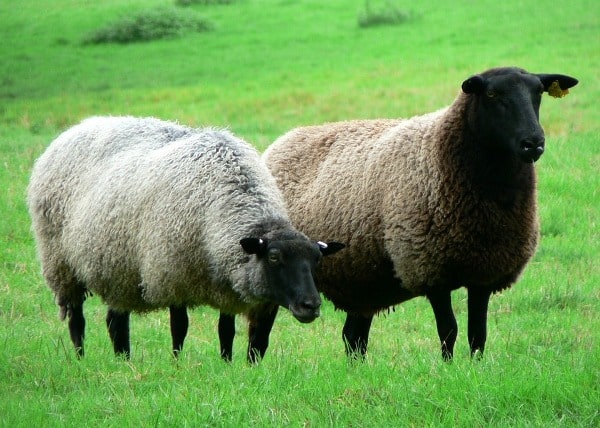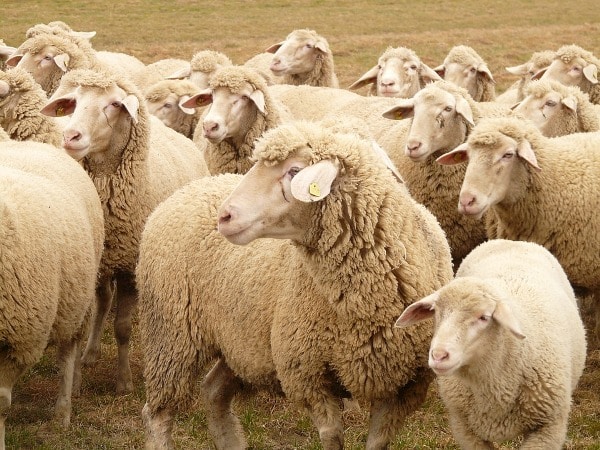Sheep fattening techniques, ideas, and tips
Today, we discuss the topic of sheep fattening business plan, techniques, and methods.
Fattening has been defined as an intensive feeding of highly nutritious feed to promote fast growth and fat deposition to attain desired carcass growth and quality. Such systems can be applied to sheep as they can simply adapt to an intensive system of production under feedlots. Fattening programs want to realize the maximum growth rate and higher carcass yields in a minimum phase of time, which would raise production per unit of land and the value of the livestock.
Breed Selection:
The farmers not only have to choose the best breed which can bring results for fattening, but has to select the most suitable animals from the selected breed. Through better management, the weight gain of these chosen breeds would be higher. The most proper sheep breeds for fattening include Balochi, Harnai and Bibrik sheep. The animals must be tagged on arrival to the farm, the information to be recorded include the breed of animal, live weight of animal and age of the animal date of purchase, etc.
Breed types
The selection of breed types for fattening is mainly based on the availability of the breed in the particular area. This is mostly true for smallholder farmers, small-scale urban, peri-urban and cooperative sheep fatteners.
Read: How To Extract Aloe Vera Juice.
Characteristics of Breeds Recommended for Sheep Fattening:
Balochi Sheep
The Balochi sheep variety originated in southwest Pakistan, eastern Iran, and southern Afghanistan. It is a large-sized fat-tailed breed main in central, southern and some south-western parts of the Balochistan. It is a mutton and dairy sheep, generating coarse wool. Its fleece is the white color with pigmented head and legs. Body size changes between 35 and 40 Kg in adult eves, milk yield between 40 to 50 kg in a stage of about 125 days. The average fleece production is 1.3 to 1.8 Kg.
Bibrik
Bibrik is a fat-tailed, mutton type sheep that initiate in parts of Loralai Kohlu, Bugti, Barkhan, Musakhel and Sibi districts in Balochistan province. Bibrik is a medium size breed. Body color is white with black or brown color head. The wool yield is approximately 1.7 Kg. The Bibrik tail is fat and short. Average adult live-weight is approximately 27 kg.
Harnai
The Harnai is a fat tail, mutton or wool type breeds. They are originating in parts of Loralai, Quetta, Sibi and Zhob districts in Balochistan. They are medium size with a white color body coat with a black or tan spotted head and ears. The Harnai wool yield is 2.6 kg with medium fiber diameter. They contain a compact body with a small fat tail, high fiber density. Its Harnai wool is dense and heavy. Average adult body weight is around 30 to 32 kg. The breed produces excellent quality mutton.
Housing
Housing shade is necessary to keep the animals safe from rain, wind and other natural elements. It can be prepared from a low-cost material, i.e. mud bricks, etc. To maintain the roof either girder or bamboo can be used. Shade could be open from one side and close from three sides Sheep can simply live on soft ground and ordinary sheds. For more permanent structure bricks and Garder can be used. The animal shade should be clean and dry to keep the animals safe from diseases. The sheep on average require 12 to 14 square feet of space in the shed and 24-30 square feed in the open paddock.
Importance of the sheep fattening

Sheep fattening has been acknowledged as an important venture. The primary cause is the perceived profitability of the production, which is acknowledged by fatteners, National Research Centers, Bureaus of Agriculture and Livestock Resource Development Promotion Agencies. It is perceived to have moderately low start-up costs and labor requirements. Lower investment costs in sheep fattening as compared to fattening large ruminants have been cited. Lower the risks related to sheep fattening are gearing rural farmers as well as peri-urban and urban dwellers to get involved in sheep fattening as a sideline income generation activity. Fewer requirements for space and feed for fattening sheep compared to those essential for large ruminants has encouraged resource-poor farmers to embark on sheep fattening. This is particularly the case when a feed is in short supply.
Sheep fattening is not as the labor-intensive movement as the fattening of large ruminants. As such, it can be undertaken with family labor as a secondary activity. This is particularly true for smallholder rural farmers and peri-urban and urban small scale sheep fatteners whose labor for sheep fattening is shared with other main agricultural and household activities.
In cooperative sheep fattening, organism labor does not appear to be a constraint, as members of the cooperative mainly provide the necessary labor. Conversely, in large scale sheep production and fattening farms, which are moderately labor-intensive, hired labor is used. Sheep fattening has been noted to be a more profitable approach than fattening large ruminants. It has faster economic proceeds that enable rapid expansion of the activity. The positive feature of sheep fattening as a profitable business is attracting government policies to engage rural and urban unemployed youth into sheep fattening by organizing them in cooperatives.
Read: Layer Poultry Training in India.
Main features of sheep fattening activities
Level of complexity or scale of fattening
Most sheep fattening activities in the country are based on traditional husbandry practices and locally obtainable inputs. Sheep fattening has not actually been developed as a business by rural, periurban and urban fatteners but has instead been undertaken as a secondary activity. Smallholder rural farmers fatten an average of fewer than five sheep fattened per cycle. Peri-urban, urban, cooperative and large scale farmers have different flock sizes. There is requiring to systematically characterize these different systems.
Source of the fattening sheep
In most rural areas, sheep from own production or flock are used for fattening, while some smallholder farmers purchase sheep. Conversely, mainly sheep fatteners in urban and surrounding areas as well as those that fatten sheep in cooperative buy sheep from the local market for fattening. It is not uncommon to obtain fatteners in urban and nearby areas that have one or two breeding ewes that partly supply male animals for fattening.
Selection for fattening
Generally, the body condition of the animal is the key attribute through a selection of sheep for fattening. Wide and deep body frame, height and length, as well as coat color are attributes measured when buying sheep for fattening. The dentition is used as a basis to determine the required age for fattening. Energetic animals are considered healthy. Visual inspection of the mouth, skin, and areas around the anus are used to guess the common health condition of the sheep. The coat color of the sheep is very crucial. There is no standard weight and age at which the sheep start fattening. Respondents noted that Washera, Horro, Bonga, Woliata, and Afar sheep can enter fattening at 3 – 4.5 months of age, immediately after weaning.
Constraints to sheep fattening

Feeding
In India sheep are traditionally maintained in extensive range management with supplementation of top feed resources through the lean season. Due to progressive shrinkage of grazing land and market condition of quality meat for local consumers as well as an export market, fattening lambs are to be maintained on grazing or feeding on roughages.
Feed Manger: The feed manger ought to be at least 5 feet long and 5 to 6 inches deep and its height should be between 1 to 1.5 feet. This type of manger is sufficient for feeding of 8 to 10 animals.
Water Trough: Water trough must be 10 feet to 15 feet long, 2 Feet wide and 9 inches deep. This type of trough is enough for 100 animals.
Feed constraints
Among the majority of sheep fatteners, feed ranked first as a constraint. The seasonal availability of feeds, particularly roughages, was mentioned as a major bottleneck. March to August month was mentioned at times of feed shortage, and September to February as better periods in Washera and Horro sheep producing areas. In such areas, obtainable grazing land becomes low during the summer. During the rainy seasons, management of fattening sheep becomes hard in the highlands because of the mud that reduces the intensity of sheep fattening.
In systems where hay and crop residues are bought and utilized, accessibility is low during summer partly because farmers engage in agricultural activities and do not provide them to urban and peri-urban areas. By-products such as areki atella used for sheep fattening may be in short supply through the same period because there are insufficient firewood and sunshine essential to dry and prepare ingredients used for the manufacturing of areki. Feed prices fluctuate. Sheep fatteners in the Amhara region mentioned that the main constraint regarding feed is higher price rather than feed availability, as they believe sufficient feed is available but becomes expensive during certain periods of the year. Thus, purchasing feed in advance and conserving it was stated to be the strategy that needs to be followed. The price of most agro-industrial concentrates does not fluctuate greatly by season as compared to the price of roughage feeds.
Diseases Management
Numbers of livestock diseases are; most common sheep diseases are Peste Des Petits ruminants (KATA), PPR, Pneumonia, Piro Plasmosis, Fascioliasis, Ticks & Mange, sheep pox, Lungs & Stomach worm, and Liver fluke. Sometimes the disease causes an epidemic condition in the area. If treatment is not present on time the animal gets weaker and weaker and ultimately die. It is recommended the animals are accurately vaccinated before joining in the farm.
Disease constraints
Health problems of fattening sheep are correlated to the prevalent diseases in respective areas. In almost all places visited, liver fluke (Faciolia hepatica and Facila giagantica) was mentioned as the major health problem for sheep. Other internal parasites contain lungworm, ticks, and pneumoniare. Anthrax was observed in some areas. Different strains of ovine pasteurellosis cause death of sheep. Generally, the disease was not mentioned as the main constraint for fattening sheep. Fatteners who depend on purchased animals for fattening noted that the health position of the animals upon purchase, especially with regard to parasitic load, is generally not known.
Risks associated with sheep fattening
The main risk associated with sheep fattening action is the loss of animals. This can be due to disease, predators or theft. Price fluctuation is another risk related to sheep fattening. To minimize risks associated with the disease, there is a requirement to enhance the service delivery system and ensure the availability of enough health services. Strategic deworming and proper vaccination should be developed and in place. Risks associated with predators and theft can be minimized using suitable housing. Selling animals at the right time when the demand for fattened sheep is high is an excellent strategy to avoid loss of profit due to lack of demand. The lack of insurance system for sheep fattening was mentioned as a reason for not getting an opportunity to minimize the risk of the business.
Read: How to Grow Tomatoes in Container.
In my opinion this article was really useful and complete about sheep breeding Thanks for sharing
Some one who can help me of bussines plan for sheep feedlot